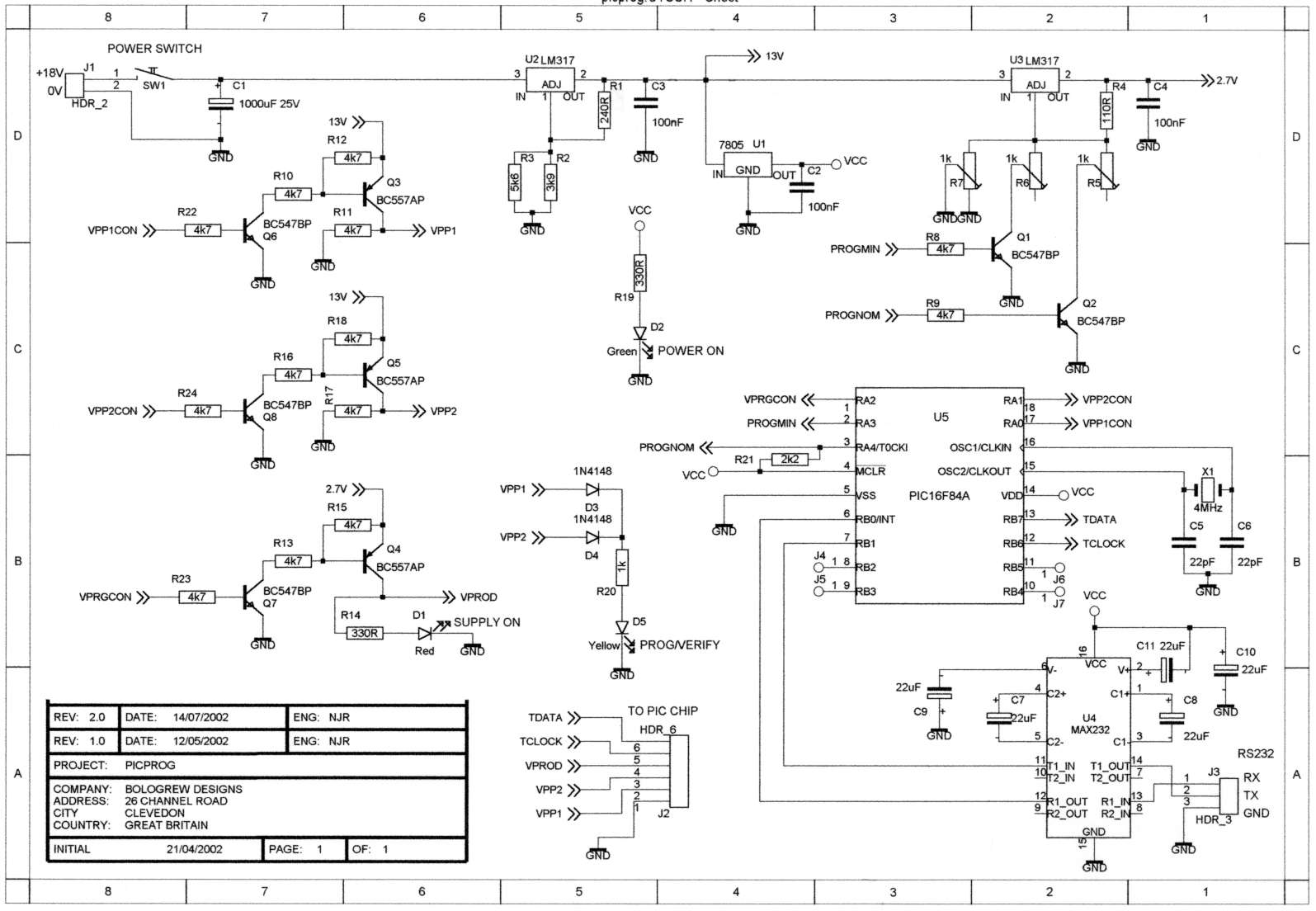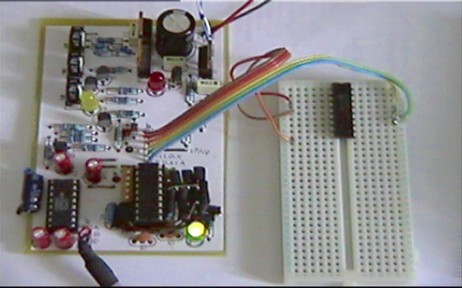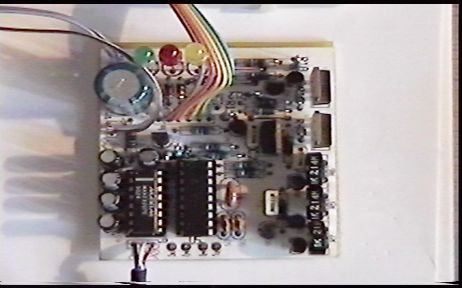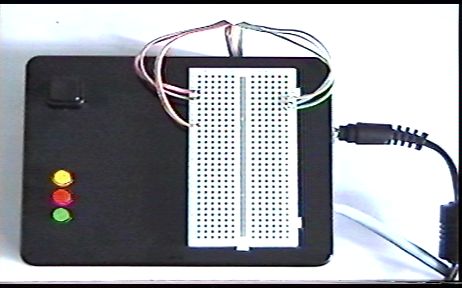
You've probably spotted the catch. Yes, you
do need a PIC programmer to program the PIC chip inside the PIC
programmer - or know someone who can do it for you. I had my old
parallel port one for that first pass. Once you've programmed the
PIC chip sufficiently well to be able to program another PIC chip, then
you're in business! :-)
This is actually the MkII version. The MkI didn't go to waste though. I sent it to Aaron, a friend in the USA.
Here's the MkI:

This is actually the MkII version. The MkI didn't go to waste though. I sent it to Aaron, a friend in the USA.
Here's the MkI:

and here's the MkII:




By fitting a chunk of breadboard to the top of the
box, the flying leads can be arranged to handle the pin-out of any PIC
chip and there's enough room to build an entire circuit on the top if
you want to.
Now you need the source code for the programmer and the host. Here it is. The host program, linpps, requires the GNU C compiler et al. The programmer source code was designed for use with the gputils tools. The linpps program is not pretty but it does the business. It is currently hard-wired to handle the PIC 16F84A but feel free to modify it. :-)
So could it be better? The 4MHz 16F84A in the circuit can only manage a serial port running at 19200 bps. You can get versions of it now that run at 20MHz but you would have to go through and alter all the timing routines and tweak the RS232 code to compensate for the faster execution. You could stick a USB->Serial chip in there to make it a USB PIC programmer but I've got a standalone USB->Serial converter cable so this way I can use it with either interface.
<Back>
Now you need the source code for the programmer and the host. Here it is. The host program, linpps, requires the GNU C compiler et al. The programmer source code was designed for use with the gputils tools. The linpps program is not pretty but it does the business. It is currently hard-wired to handle the PIC 16F84A but feel free to modify it. :-)
So could it be better? The 4MHz 16F84A in the circuit can only manage a serial port running at 19200 bps. You can get versions of it now that run at 20MHz but you would have to go through and alter all the timing routines and tweak the RS232 code to compensate for the faster execution. You could stick a USB->Serial chip in there to make it a USB PIC programmer but I've got a standalone USB->Serial converter cable so this way I can use it with either interface.
<Back>